Turning a Boring Lawn into a Wildlife Garden
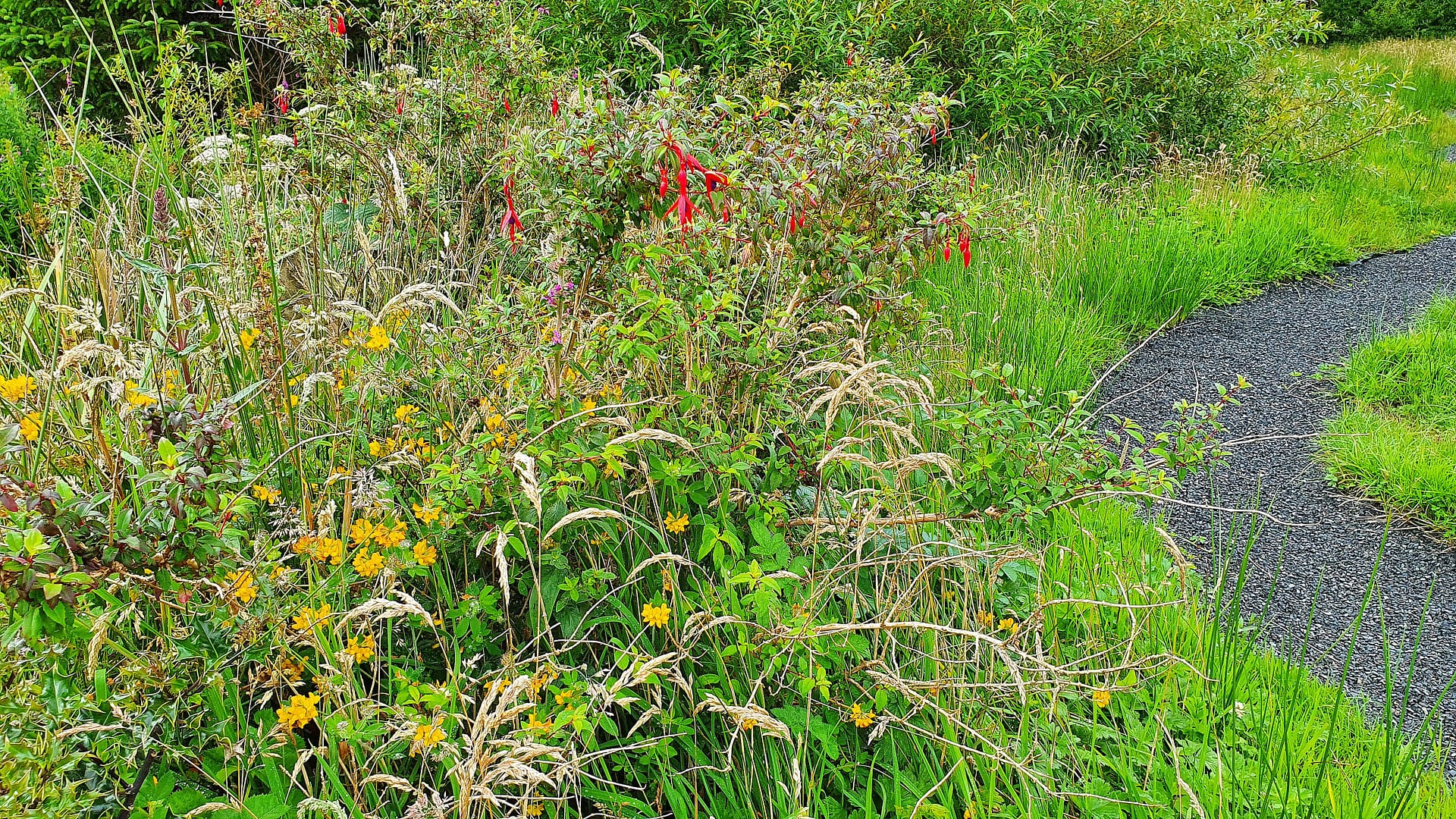
The home my husband Gerhard and I retired to in County Kerry in December 2019 is surrounded by about 1/2 acre of lawn. It didn’t take long until we decided to turn it into a wildlife garden instead.
I am not a fan of lawns under the best of circumstances. One reason is that they are just plain boring. Another is that they require constant mowing. The most important, of course, is that keeping lawns green and weed-free requires chemicals that are extremely harmful to any plants, birds, animals or insects that come into contact with them.
In our case, a fourth reason is that our property is a bog. This means the soil is almost always wet. Which also means that when the young neighbor lad turned his ride-around mower loose on our property, it left deep gashes in the earth.
So our first decision was to simply stop mowing the lawn and let nature take her course. Our second decision was to make some changes to the property that would support wildlife–and the humans living there–even better.
Finding Someone Who Could Help Us Create a Wildlife Garden
So at the beginning of 2020, I started looking for a local garden designer who could help us create an overall plan for our property. I soon discovered the delightful Ian McGrigor, owner of Gortbrack Organic Farm. On his website, Ian explains that:
Gortbrack is dedicated to designing gardens for wildlife by creating habitats for our native flora and fauna; and to edible garden design, helping people to start growing their own vegetables again no matter what size garden they have.
This sounded wonderful to me, so in February I contacted Ian and arranged for him to visit us. After a very enjoyable and educational conversation about what eco landscaping consists of and what we were looking for, he carefully walked through our property.
Then he created a plan that included planting a hedgerow (hawthorns, elders and rowan trees) along one whole side of our property. (The other side already has a hedgerow.) It also included planting a mini-forest of native trees (oak, alder and birch) and a small orchard. In addition, the plan included digging out a wildlife pond as well as a pathway that would enable us to walk through the property even when the earth is extremely wet. Finally, it also included building four raised beds for a kitchen garden.
Building the Wildlife Garden
We planned to start the project in March, but it didn’t actually take place until the middle of June because of the covid virus quarantine. Altogether, the project took about a week from start to finish.
First Ian brought an assistant, Michael, who began planting the hedgerow and the mini forest for us. (The shrubs and trees came from Ian’s own farm.)
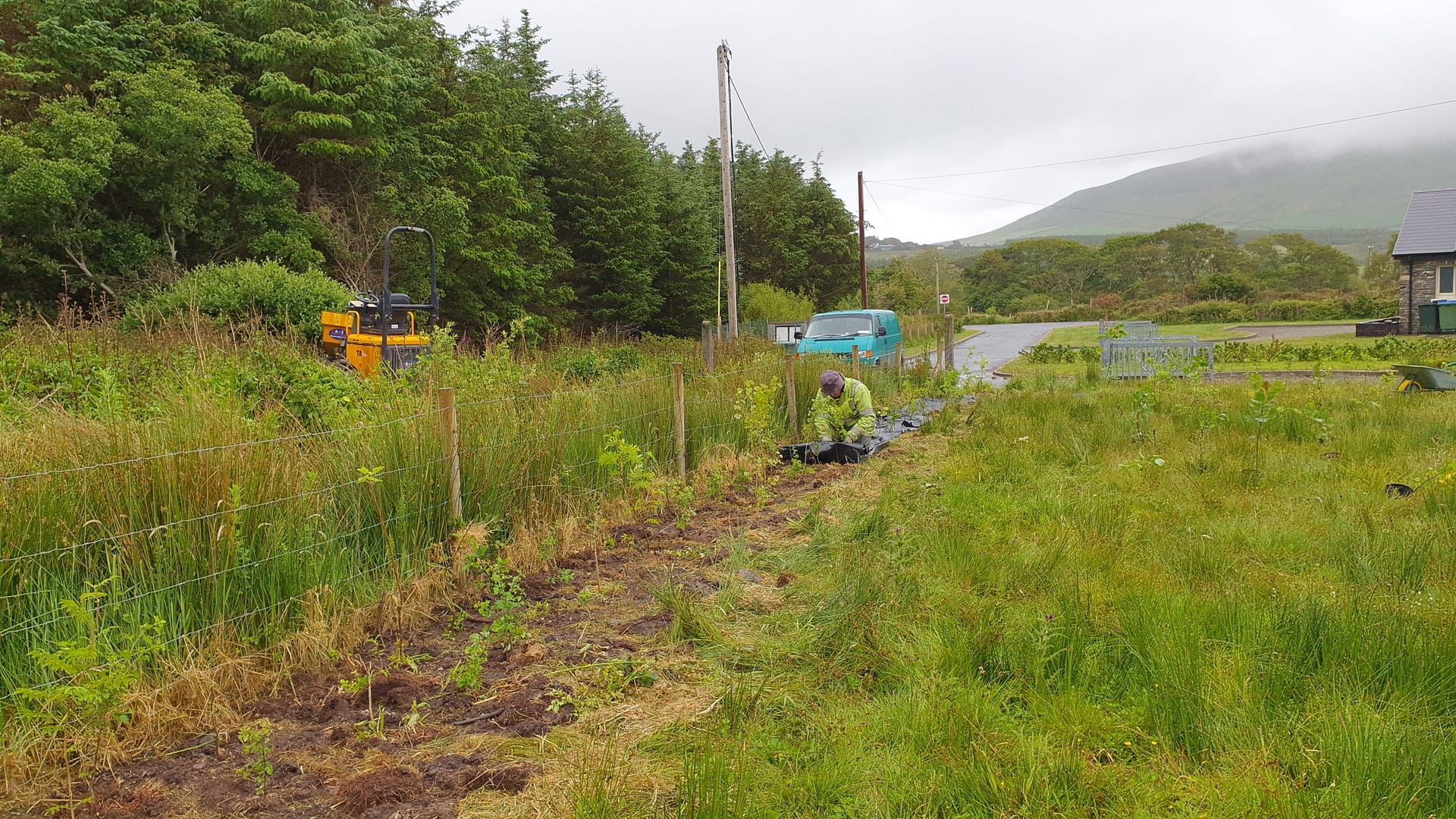
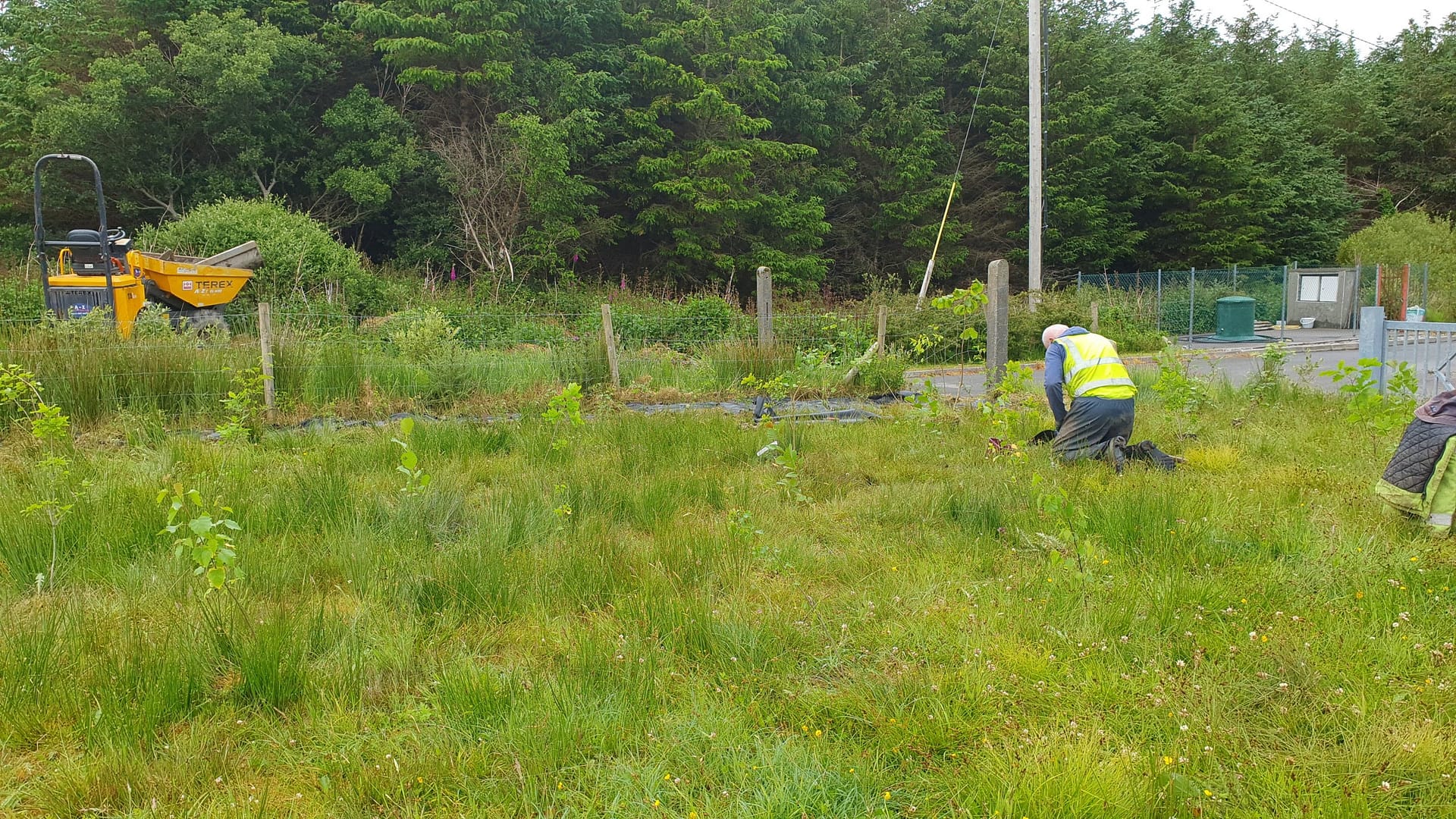
Creating the Pattern
While Michael was planting the trees, Gerhard took our lawn mower and made a pathway through the meadows where we wanted the permanent walkway to go. He also mowed an outline of our pond and of our future orchard.
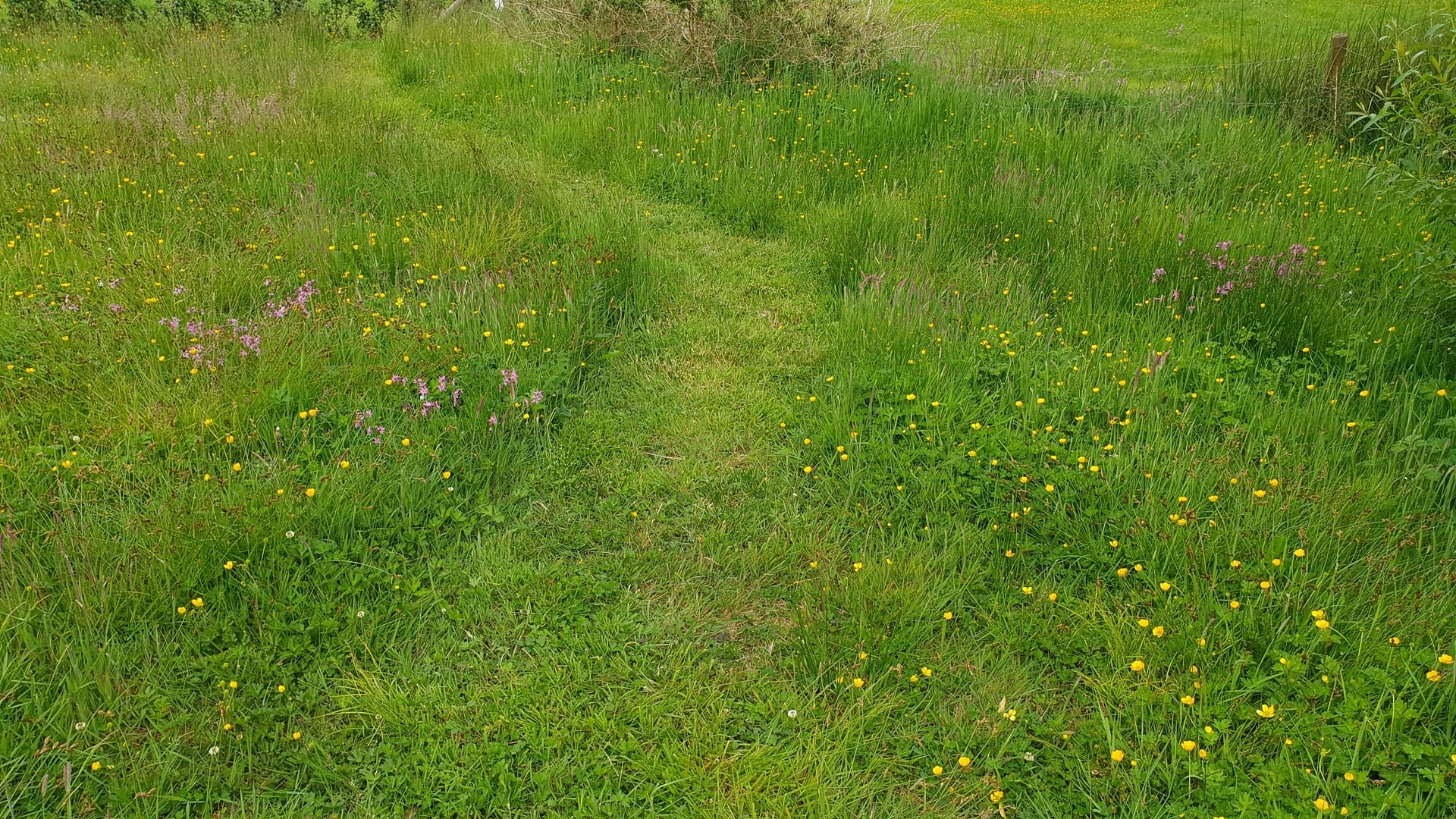
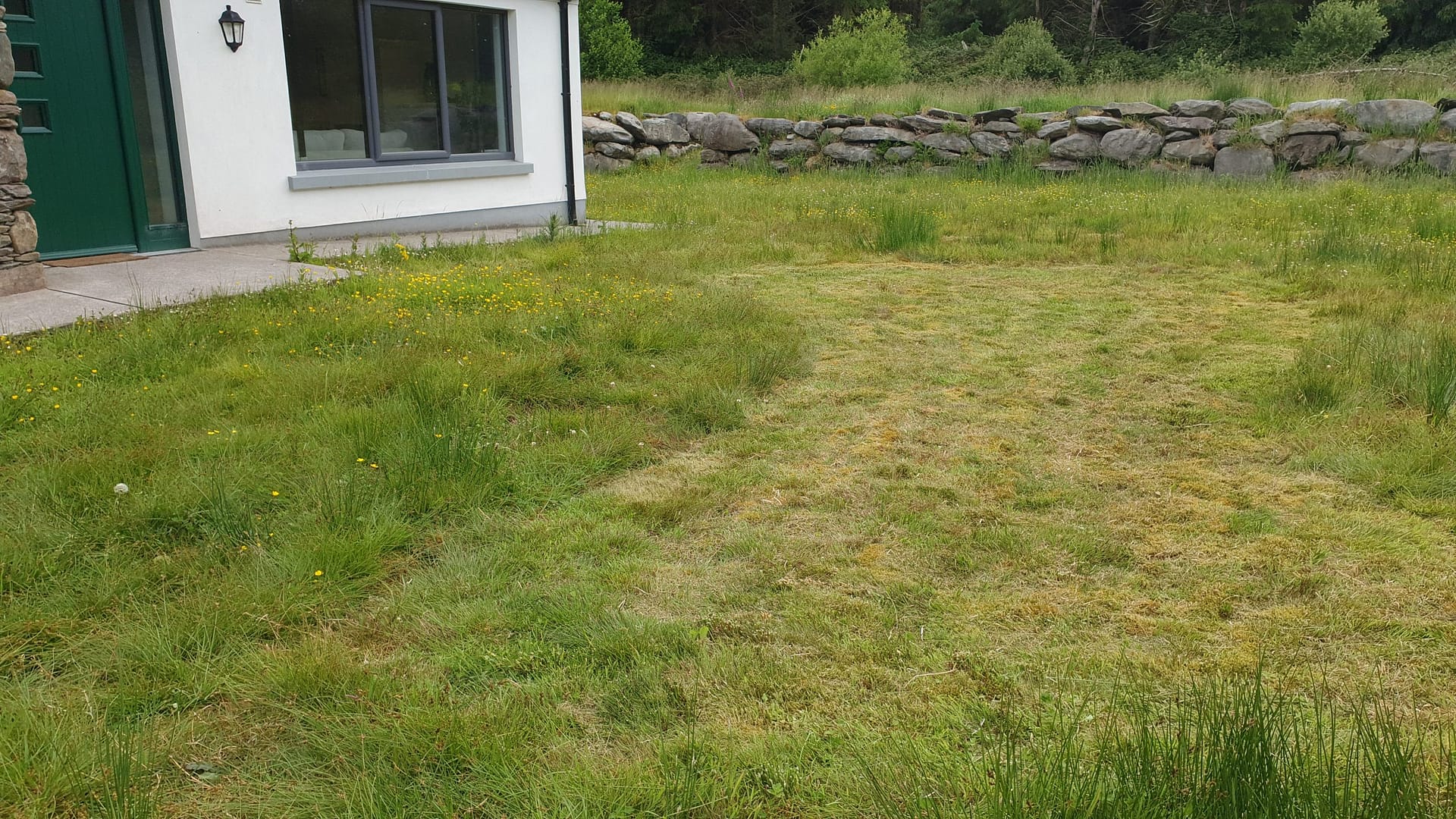
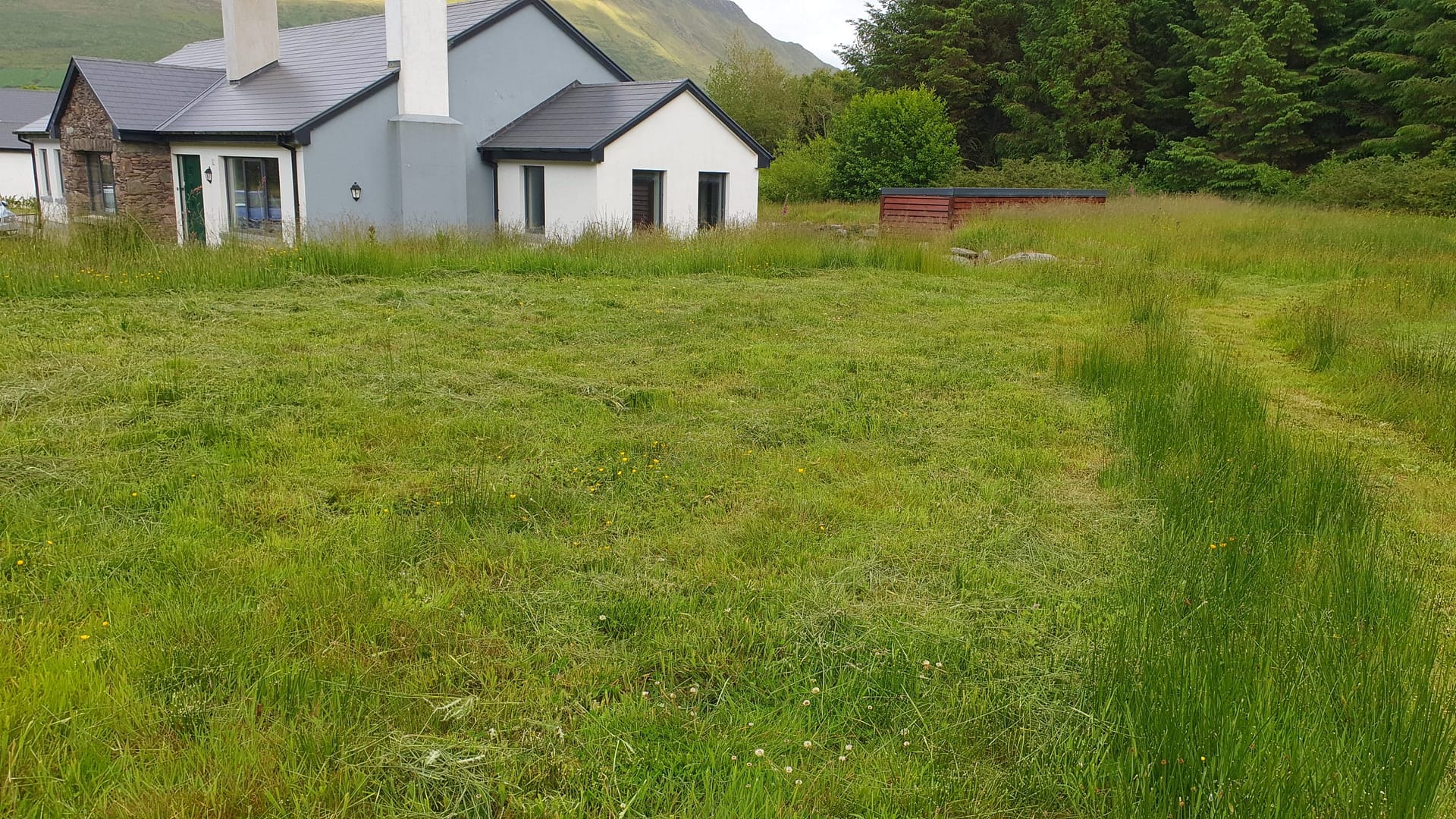
Creating the Pond
Then Ian brought in Gene, who brought a large digging machine with him. Gene then proceeded to dig out the pond and the pathway around the property. He began by digging out the pond in three layers following the pattern that Gerhard had laid out. When doing so, he unearthed numerous large boulders, which he set aside.

After Gene had dug out the pond, Michael smoothed the layers by hand.

Once Michael was finished, the men stretched a sheet of plastic liner across the entire pond.
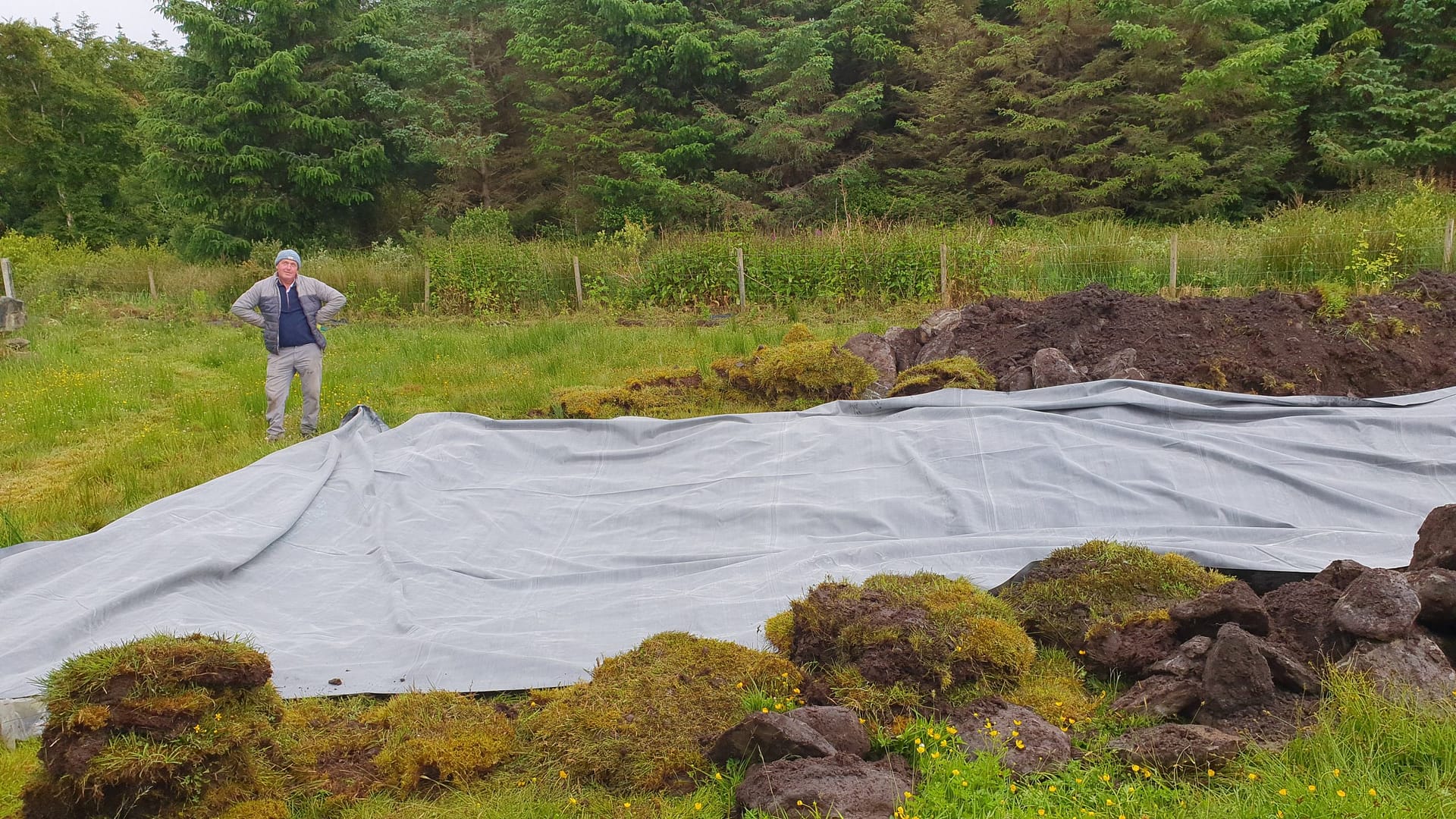
After this, they battened down the edges with some of the leftover sod and small rocks.
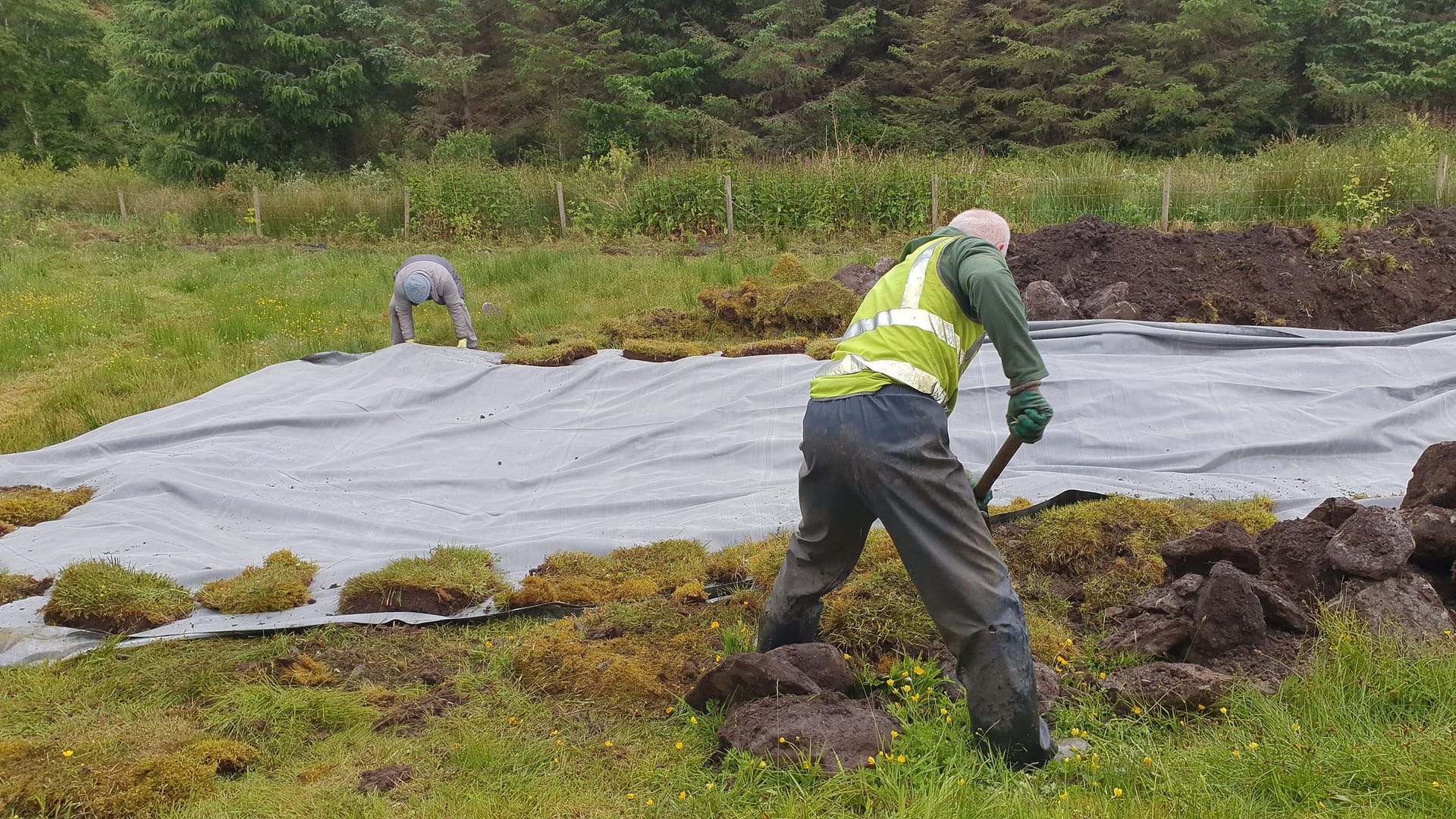
Then they began filling the pond with water.
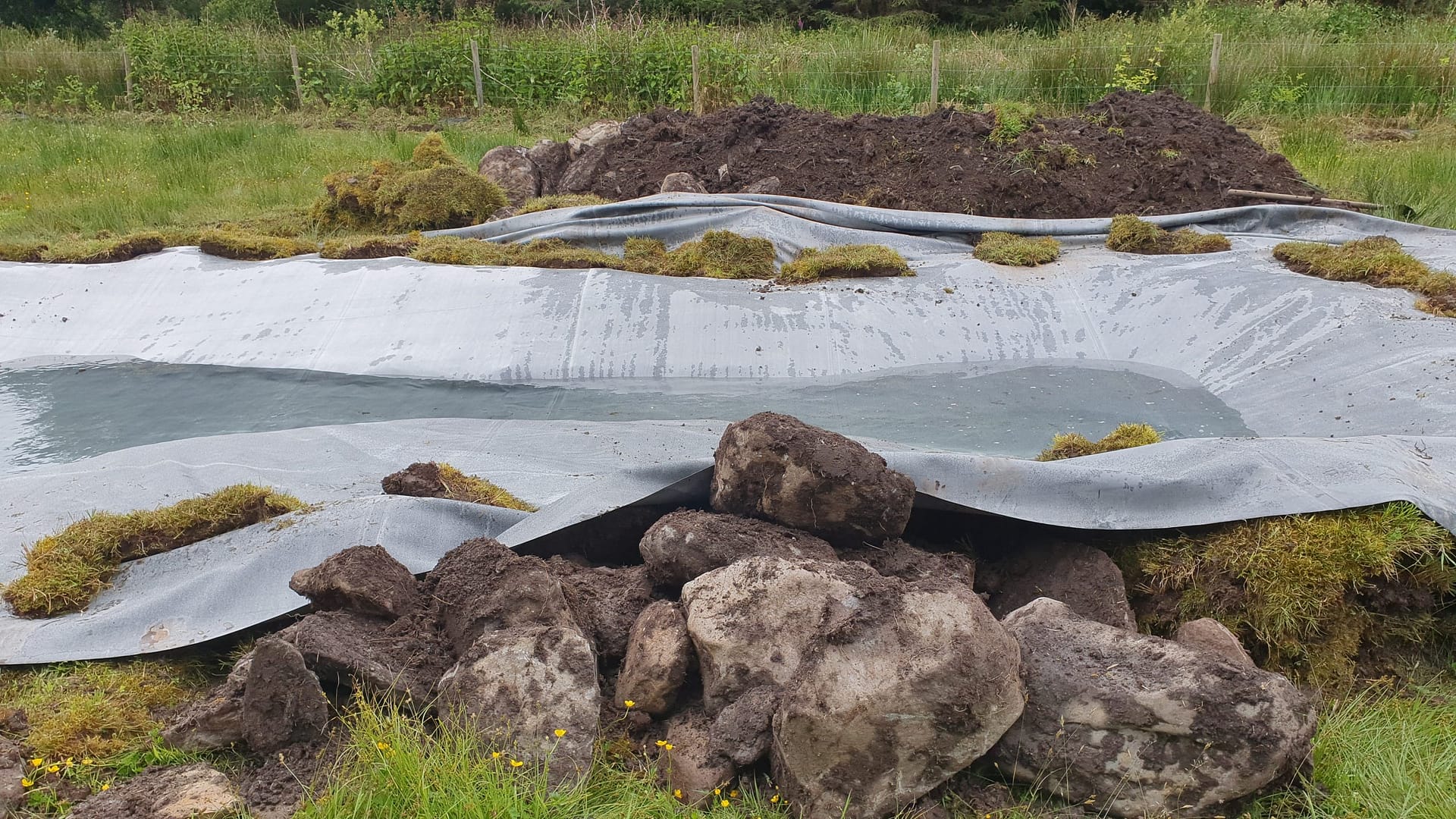
Finally, they covered the edges of the entire pond with sod. Gene also used the digger to place the boulders in various places around the pond.
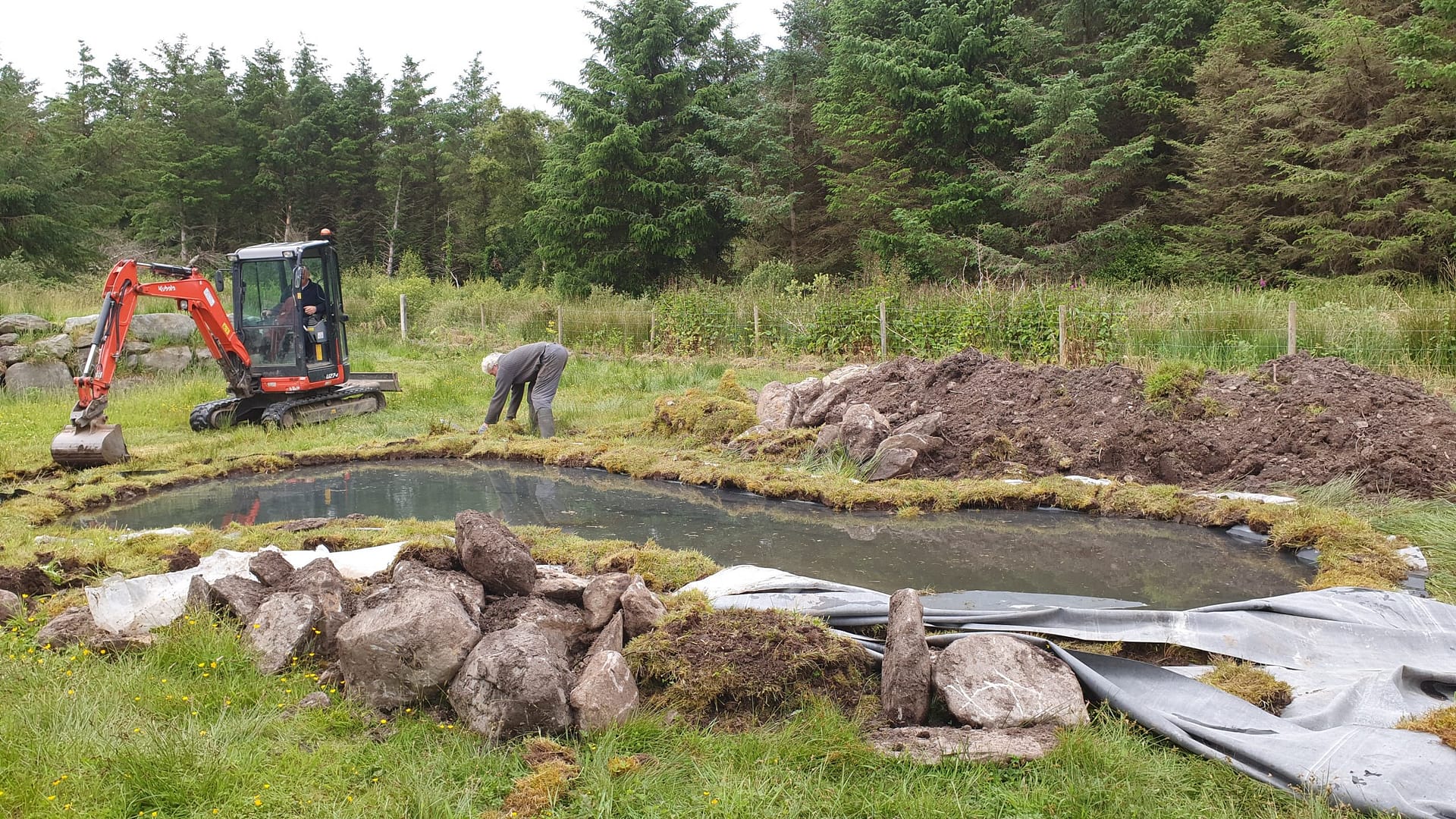
Creating the Pathway
Gene also used the digger to carve out a pathway through the property.

After he had finished, the men laid black plastic over the pathway. Finally, they covered it with small rocks.

Creating the Orchard
Because our property is so wet, Ian suggested that we create three small hills for the fruit trees and dig a trench between them to drain the water off. In addition–because the pathway crosses this area–he also suggested that we lay pipes under the pathway so that the water can drain properly.

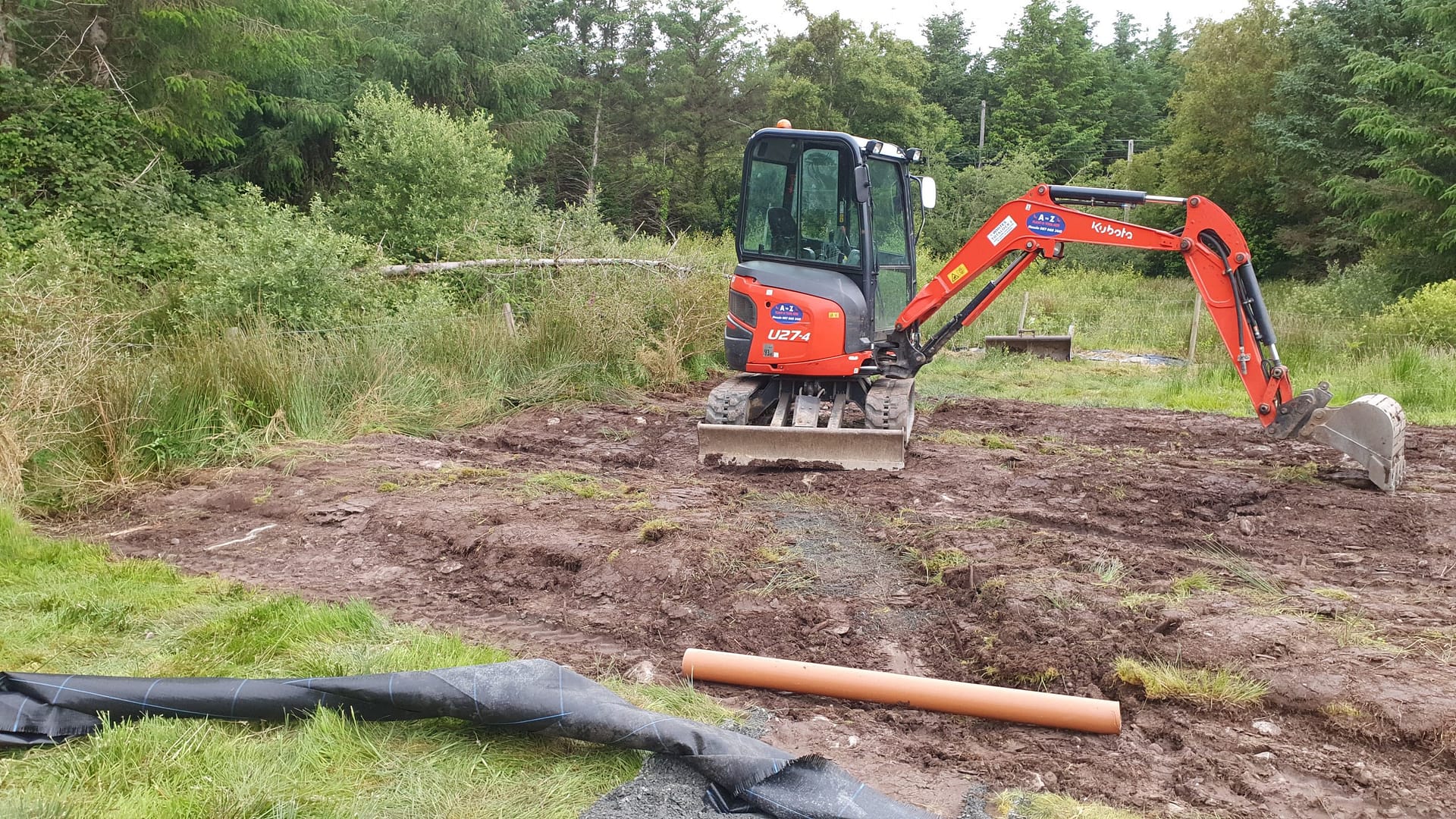
The Raised Vegetable Beds and Steps
Preview in new tab(opens in a new tab)
Ian also built four raised vegetable beds for me. First he filled the bottom of each vegetable bed with some of the sod that had been removed to make the pathways. Then Gerhard and I went down to the beach (several times) and collected seaweed that we added to each bed. Finally, Ian arranged for the delivery of 10 large sacks of top soil, which he spread out on top.
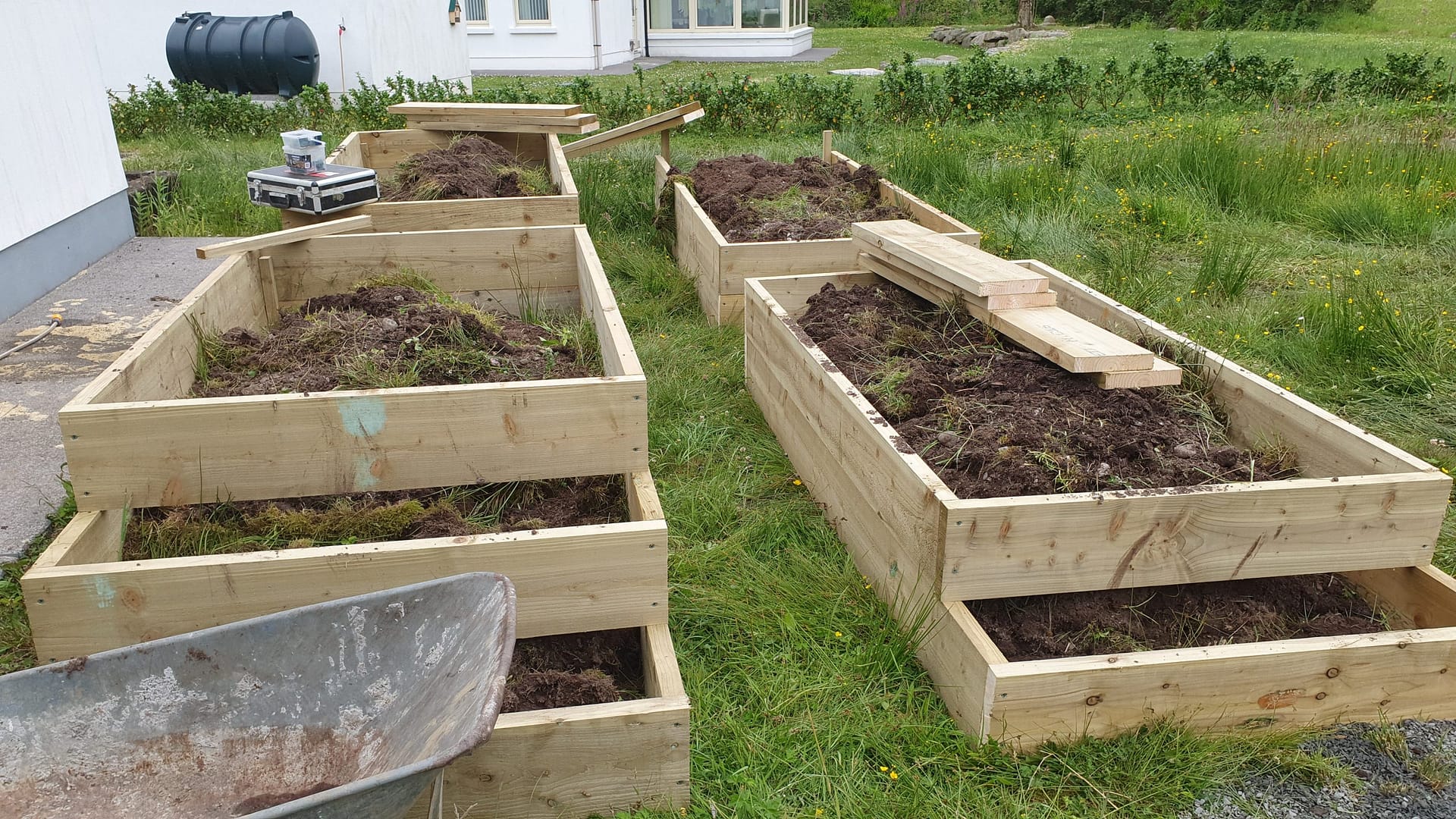
Ian also built steps that lead from the lower level of our property to the upper level.
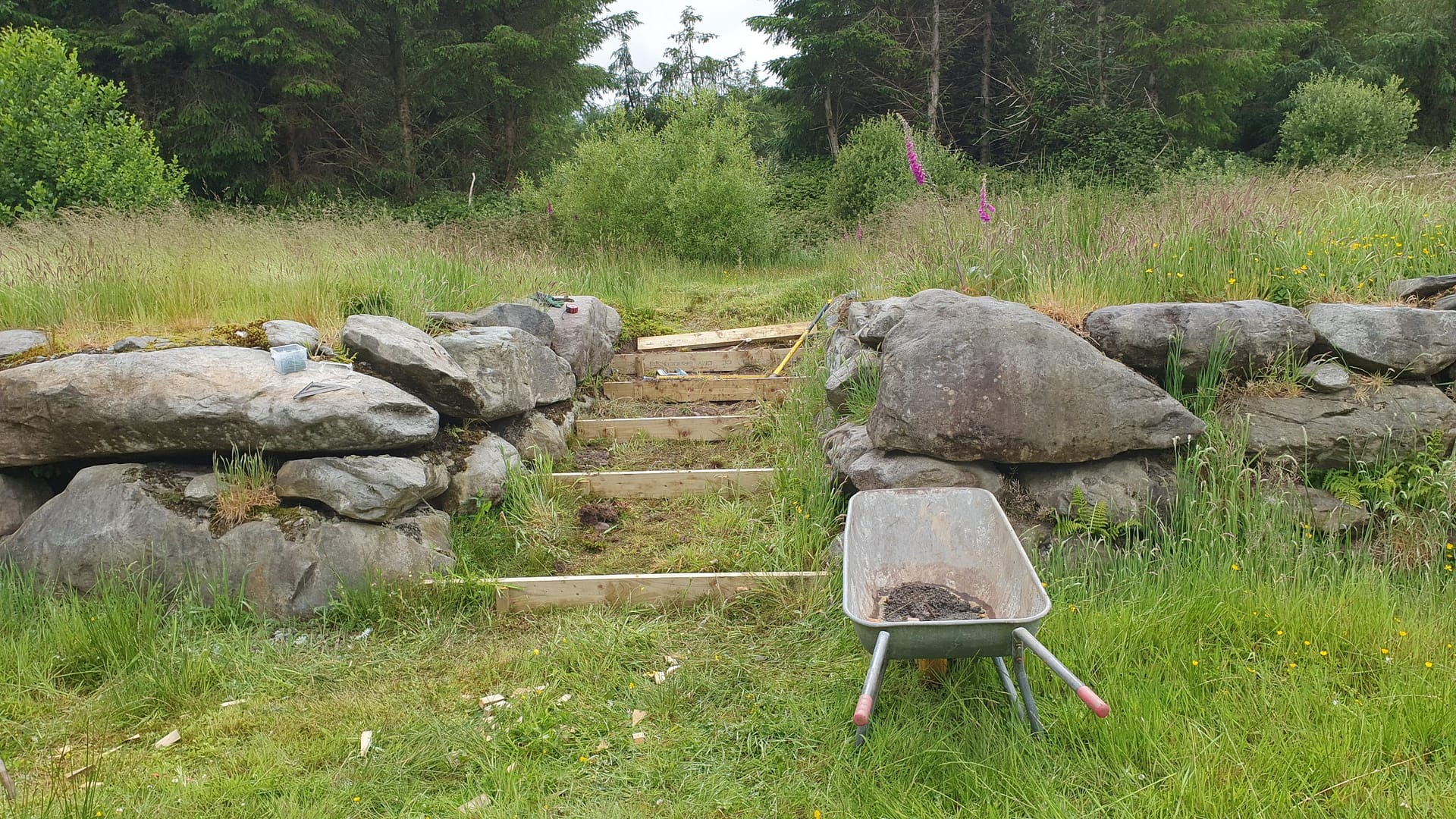
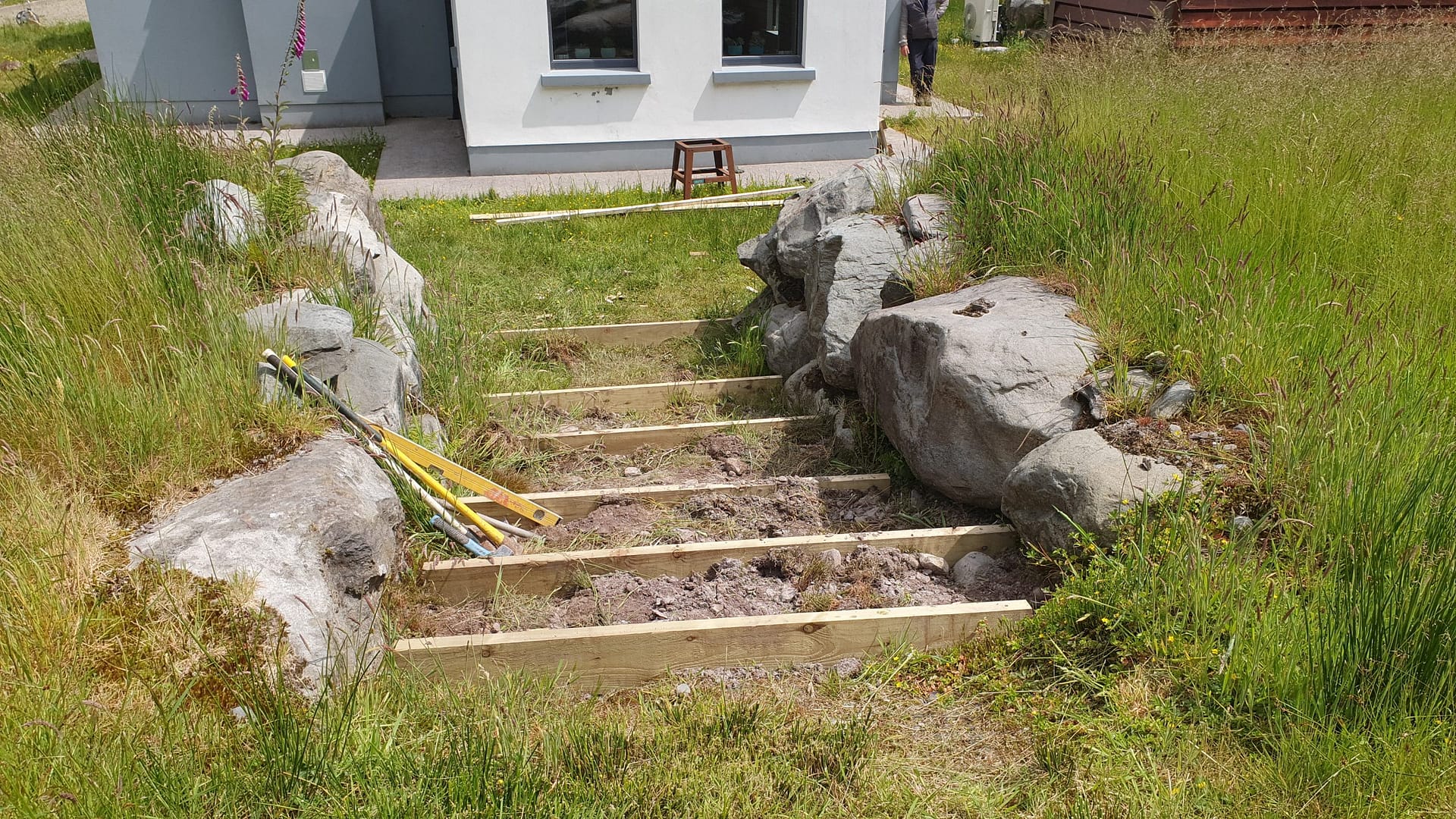
“After” Pictures
Because it was so late in the season when Ian and his assistants were able to finish the project, there were no vegetable plants (or even seeds) left in the stores! To remedy this, Ian very kindly supplied us with numerous vegetables and herbs from his own garden. He also brought us a native Irish water lily and gallons of water from his own pond to “seed” the life in our pond!
In addition, Ian planted three small apple trees and a few raspberry plants in our orchard. We will plant more fruit trees as soon as they are available in garden centers again in the fall.
Following are some “after” pictures of our wildlife garden:

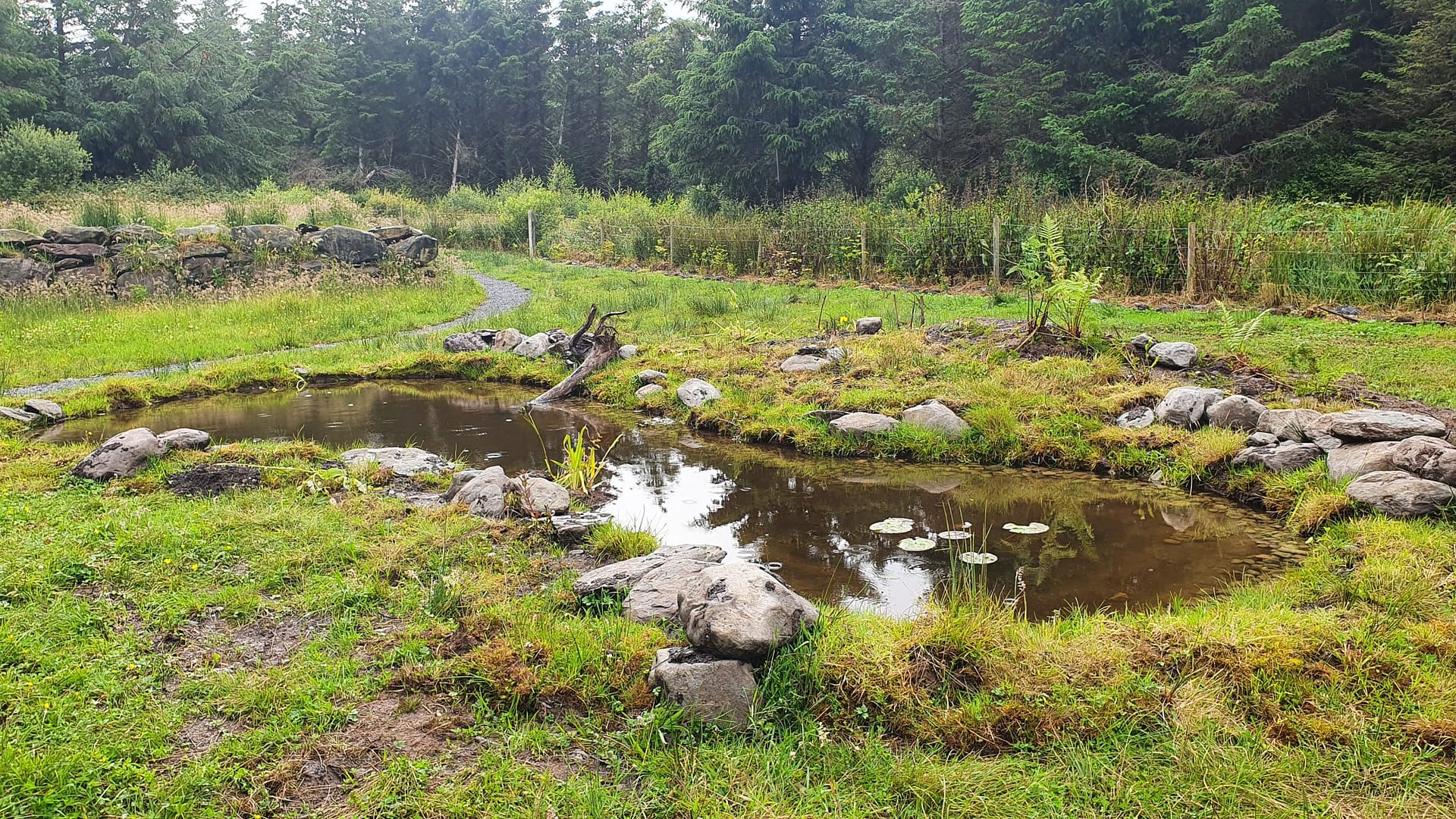

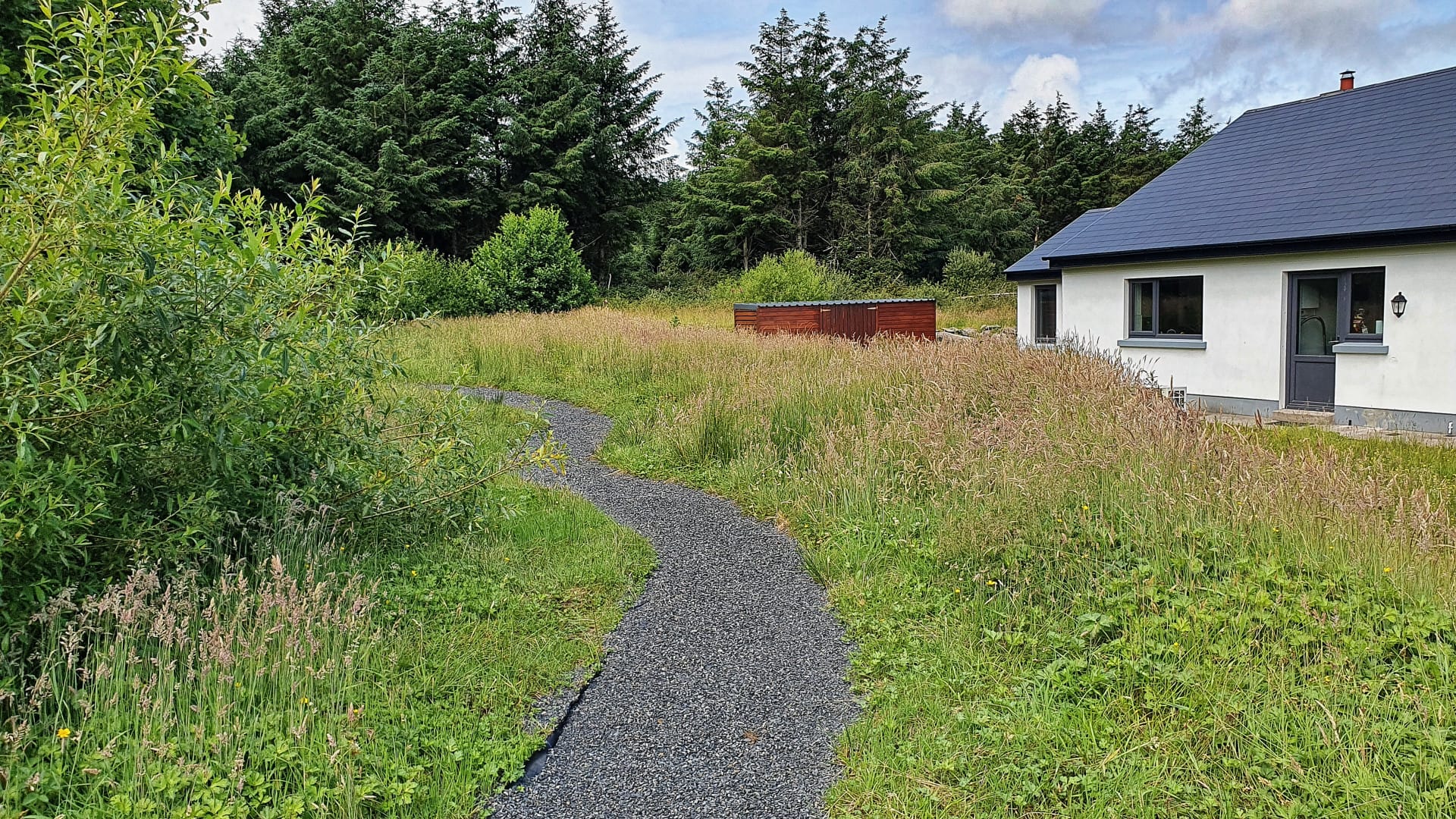
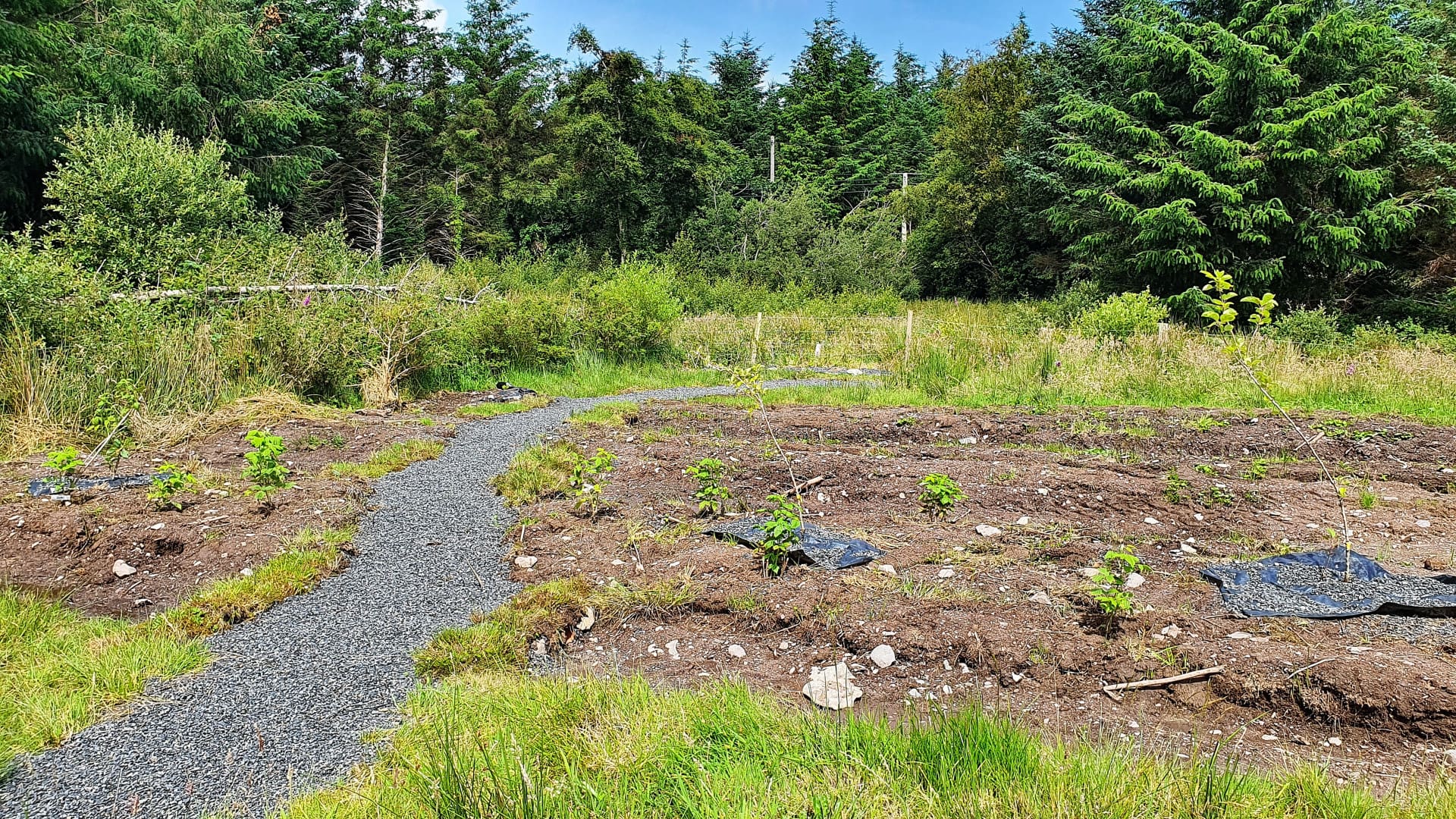
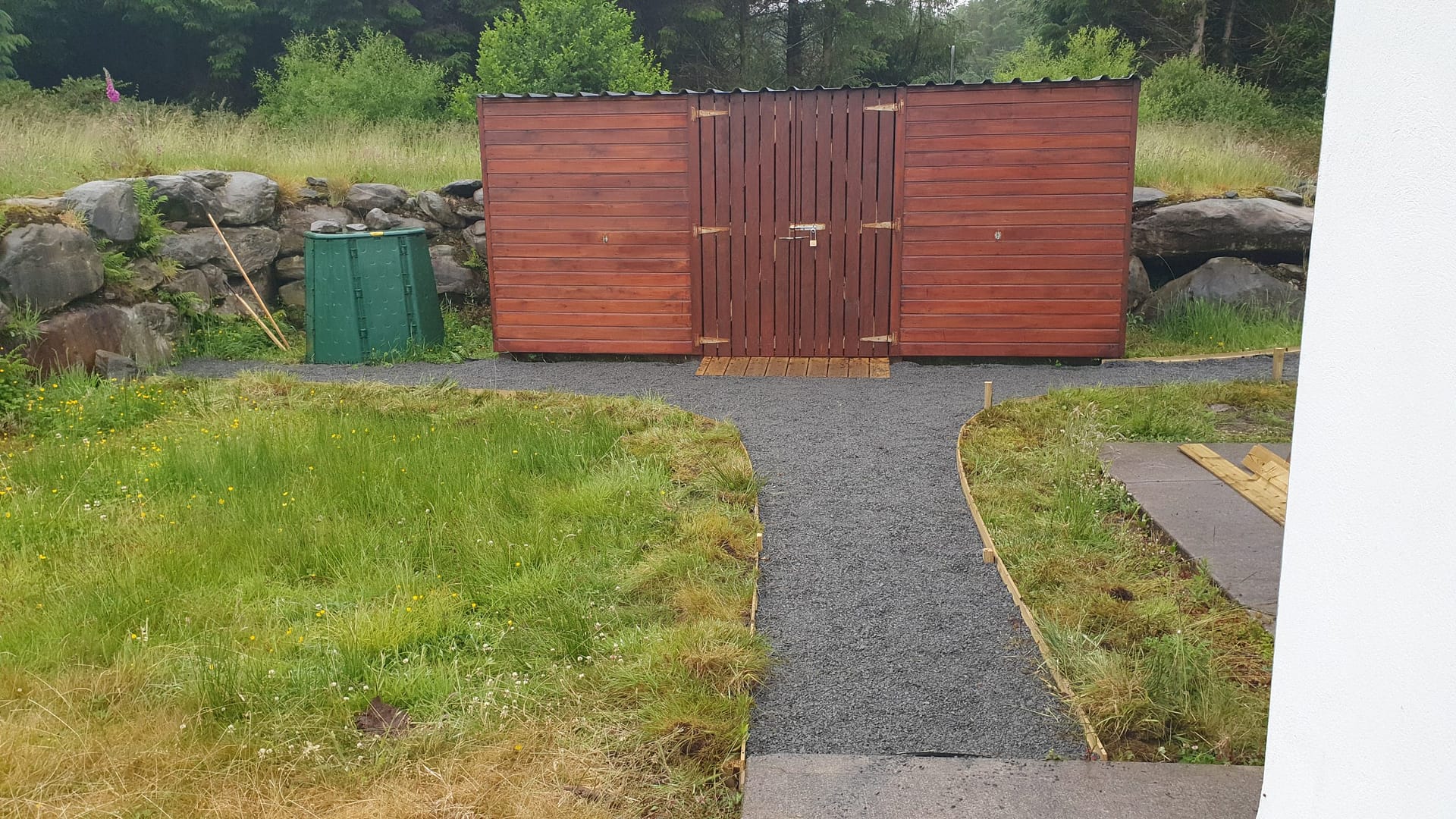

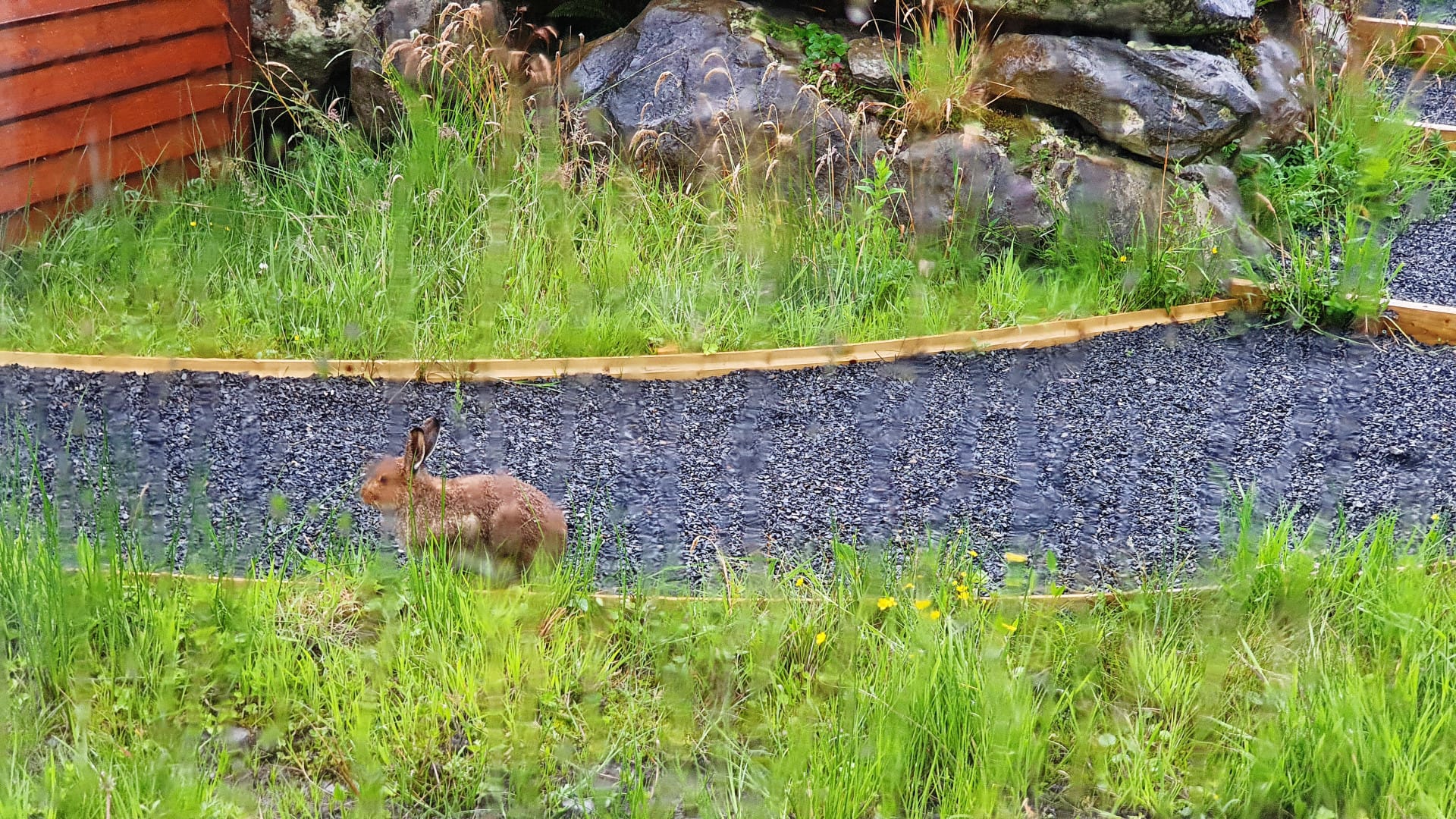
Gerhard and I are really happy with our new wildlife garden and looking forward to seeing how it continues to grow, change and mature over time.
We watch excitedly as hares, rabbits and pheasants enjoy the new pathway. (The picture above was taken from our dining room window!). Bees happily suck the nectar from the wild flowers appearing in the meadows, and every time I walk through them, myriads of moths and butterflies fly up all around me.
The pond has water beetles and other insects swimming in its depth, and numerous water striders glide over the surface. I have also started to see dragonflies hovering over the pond and enjoying the sunshine while resting on the rocks. We don’t have any frogs yet, but I am sure they will come soon!

Absolutely gorgeous and so important to co-exist and assist nature- thank you! I am engaged with habitat restoration in AZ, OK, working toward OH and more locations to inspire others, too.